Sunset of the nuclear triad. US missile defense: the present and near future
To begin with, we will announce a few points:
1. At the moment, not a single missile defense system (ABM) is capable of completely counteracting the blow inflicted by a great power - Russia, the USA, China, Great Britain, France, carried out simultaneously by several hundred carriers with hundreds or thousands of warheads.
2. Clause No. 1 is relevant only if there are no international treaties limiting the number of nuclear charges and their carriers.
3. Despite the theses # 1 and # 2 voiced, the United States will increase the effectiveness of the missile defense system in order to increase the likelihood and number of intercepted targets.
US National Missile Defense
A new stage in the creation of the missile defense system began on July 23, 1999, when U.S. President Bill Clinton signed the bill on the establishment of the National Missile Defense (NMD), under which it was planned to ensure the protection of not a limited area, as prescribed by the missile defense treaty, but the entire territory of the North American states. The official reason for the creation of NMD was the spread of missile weapons the "rogue countries." Of the entire American rogue list at that time, only North Korea could be considered a threat. The rest had neither intercontinental ballistic missiles (ICBMs) capable of reaching US territory, nor nuclear warheads that could be deployed on them. And the ability of North Korea to hit the continental states is a big question even now.
Also in 1999, the United States tested the NMD prototype, hitting the Minuteman ICBM with a training warhead, and on December 13, 2001, President George W. Bush officially announced the US’s unilateral withdrawal from the 1972 Missile Defense Treaty.
As in the case of SOI program, the new NMD system was supposed to ensure the defeat of ballistic missiles in all areas of the flight, as mentioned in the memorandum of the US Secretary of Defense Donald Rumsfeld of January 2, 2002, but unlike the SDI program, the number of intercepted missiles should be limited.
The US NMD being created can be divided into theater missile defense (theater missile defense) and strategic missile defense.
SAM Patriot PAC-3
The theater of missile defense includes ground-based mobile anti-aircraft missile systems (SAM) Patriot PAC-3, capable of intercepting ballistic missiles of operational-tactical missile systems (OTRK). As the practice of military conflicts showed, the effectiveness of the Patriot air defense systems of previous versions of PAC-1 and PAC-2 turned out to be low even with outdated Soviet Scud missiles. An acceptable probability of defeat was achieved only in the PAC-3 version, however, this only applies to relatively old missiles OTRK, how the meeting between the Iskander-type OTRK missiles and the Patriot PAC-3 missile complex will end is impossible to predict.
The range and height of the defeat of ballistic targets of the Patriot PAC-3 are about twenty kilometers. The maximum speed of the hit targets is not more than 1800 meters per second. The disadvantages of the Patriot PAC-3 SAM are the need to orient the launchers in the direction from which the enemy’s missile attack is expected.
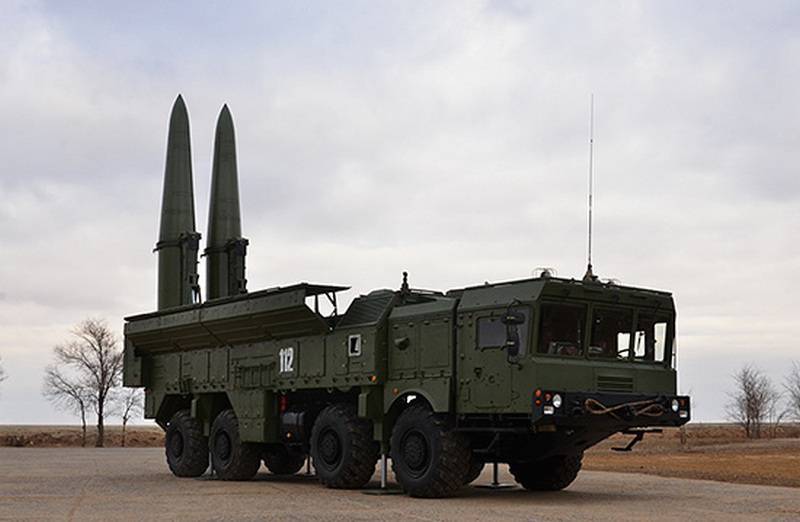
The possibility of intercepting missiles of the OTRK Iskander by the Patriot PAC-3 complex can be called into question
Complex PRO THAAD
A much more advanced weapon of missile defense theater is the THAAD missile defense system, developed by Lockheed since 1992. Since 2006, the US Armed Forces began mass purchases of THAAD missile defense. The missile of the THAAD missile defense system is equipped with an infrared homing head (IR seeker) with an uncooled matrix operating in the ranges 3,3 - 3,8 μm and 7 - 10 μm. Defeat the target by a direct hit - kinetic interception, the warhead is missing.
The maximum range and height of target destruction is about 200 kilometers. The THAAD missile defense system is capable of hitting medium-range ballistic missiles, with a range of up to 3500 kilometers, flying at speeds of up to 3,5 kilometers per second.
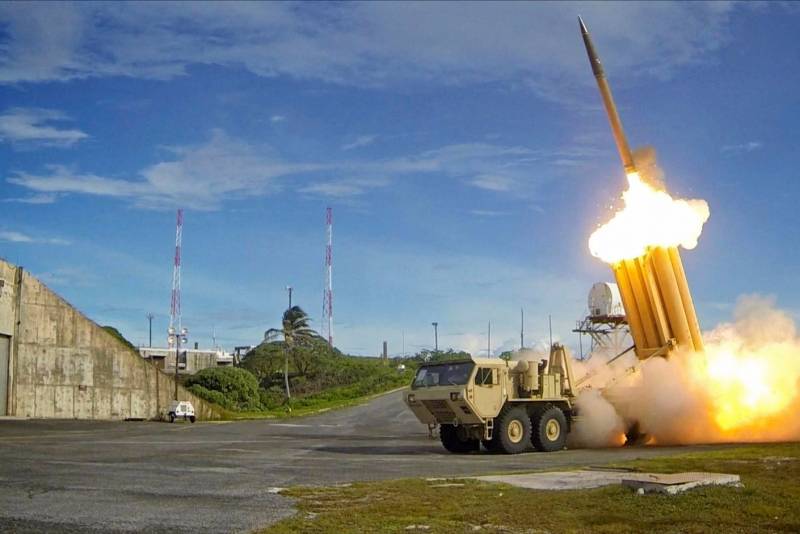
Photo: US Department of Defense / Reuters
Missile launch from the launcher of the THAAD missile defense system
The search for targets is carried out by X-band radar of the AN / TPY-2 complex with a maximum detection range of about 1000 kilometers.
The disadvantage of the THAAD missile defense system is its high cost, according to some sources it amounts to about three billion dollars for the complex, of which more than five hundred million falls on the cost of the AN / TPY-2 radar. In addition to supplying its own armed forces, the United States is actively arming its allies with the THAAD missile defense systems.
Aegis missile defense system
The most advanced element of a theater missile defense can be considered a ship’s air defense system, which was created on the basis of the Aegis multifunctional weapon control system (Aegis), modified for interception of ballistic and cruise missiles, with vertical launch anti-ballistic missiles of the Standard family.
Originally developed as an air defense (air defense) tool for US naval ships, the Aegis system was refined to allow the destruction of short- and medium-range ballistic missiles. The Aegis system also ensures the defeat of objects in near space.
The core of the Aegis missile defense system is the eponymous naval combat information and control system (BIO) used on Ticonderoga-class guided missile cruisers and Arly Burke-class destroyers. In total, the US Navy includes approximately 67 URF destroyers of the Arly Burke type and 22 UIC type cruisers of the Ticonderoga equipped with Aegis BIUS. In total, it is planned to build 87 destroyers of the URO type “Arly Burk”, while the cruisers of the URO type “Ticonderoga” will gradually be withdrawn from combat, as well as the destroyers of the URO type “Arly Burke” of the early construction. It should be noted that SM-3 interceptor missiles cannot be carried by all URO ships, but all of them can be upgraded to solve this problem.
It was assumed that by 2020, about 500-700 SM-3 missile defense systems could be deployed on the ships of the American Navy, the total number of cells in the universal vertical launch launchers (UWP) of American URO ships theoretically allows the deployment of about 8000-9000 missile defense systems (subject to failure from loading other types of anti-aircraft missiles, ship-to-ship and ship-to-ground missiles).
UIC type cruiser Ticonderoga, URO type destroyer Arly Burke and Standard Missile type missile (SM-1/2/3), launched from UVP
Of all the missile defense missile defense systems, the Aegis missile defense system can be considered the most effective, promising and dangerous. Its effectiveness is due to the highest characteristics for weapons of this class.
The Aegis missile defense system includes an AN / SPY-1 multi-functional three-coordinate radar with a phased antenna array (PAR) with a detection range of more than 500 kilometers, the ability to track 250-300 targets and aim up to 18 missiles on them (characteristics may vary depending on version Radar).
As a missile, three-stage SM-3 interceptor missiles of various modifications are used. The maximum range for hitting a target for the latest modification of the SM-3 Block IIA is 2500 kilometers, the height for hitting a target is 1500 kilometers (external target designation most likely is required). The speed of the missile is about 4,5-5 kilometers per second.
The target is hit by an exoatmospheric kinetic interceptor, equipped with its own correction engines, providing course correction within five kilometers. Target capture is carried out by a matrix uncooled infrared homing head from a distance of up to 300 kilometers.
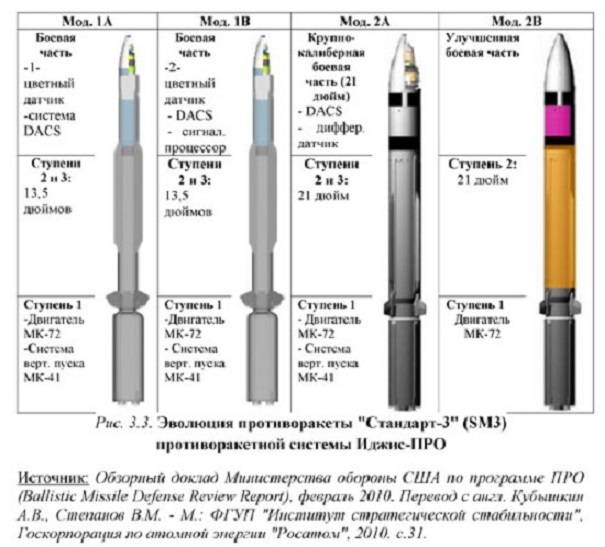
The evolution of SM-3 interceptor missiles
The Aegis missile defense system is constantly being improved both in hardware and in software. If the Aegis missile defense system of BMD version 3.6.1 from 2008 was capable of shooting down ballistic missiles with a range of up to 3500 kilometers, then in version BMD 4.0.1 of 2014 and BMD 5.0.1 of 2016, ballistic missiles with a range of up to 5500 can already be hit kilometers, and in BMD version 5.1.1 2020-2022, it is planned to ensure the possibility of destruction of ICBMs in separate sections of the trajectory.
The list of targets, albeit training ones, struck by the Aegis missile defense system is also impressive: in 2007, a group (2 units) ballistic target was successfully intercepted at an altitude of about 180 kilometers, in 2008, an emergency reconnaissance satellite USA-247 was shot down, in 193, a successful interception of an intermediate-range ballistic missile was carried out; in 2011, two cruise and one ballistic missiles were simultaneously intercepted over the Pacific Ocean.
The prospects of the Aegis missile defense system are due to the possibility of further improving its characteristics and deploying a large number of these systems in the land version, on the territory of the American base abroad and the territory of allied countries, including at their own expense. In particular, the appearance of the ground-based version of the Aegis Ashore missile defense system immediately increased the geography of this type of missile defense, and created new tension points between states and blocs. Do not forget that, like the shipboard system, the Aegis Ashore missile defense can be used to deploy subtle cruise missiles, which in turn can be used to apply sudden disarming strike in combination with other means of attack.
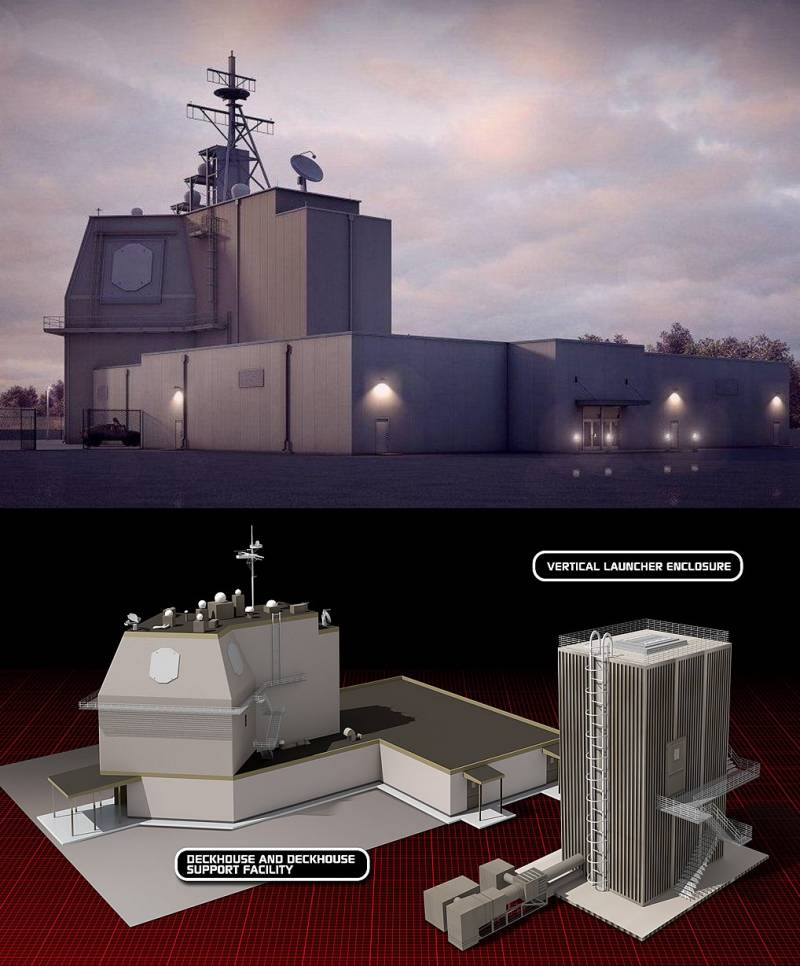
The Aegis Ashore ground-based missile defense system has significantly higher performance than the Patriot PAC-3 air defense system and the THAAD missile defense system
European missile defense is generally created as in a competent business plan. First, a need is created, for example, by withdrawing from the Treaty on intermediate and shorter-range missiles (INF Treaty), and then the EU countries are saturated with missile defense systems, which solves two problems at once: the American military-industrial complex earns and improves at the expense of Europeans, at the same time they become target No. 1 for the strategic nuclear forces of the Russian Federation in case of conflict. The United States has done the same in Asia, for example, in South Korea and Japan..
The danger of the Aegis missile defense system is due to the large ammunition of the missile defense on board the ship, the range of the missile defense and the mobility of the carriers themselves, which, even revealing the approximate patrol routes of Russian strategic missile submarine cruisers (SSBNs), allows not only hunting them with hunting submarines, but also to keep surface ships with the Aegis missile defense system capable of intercepting the launching ICBMs in pursuit of the speed of missiles of the Aegis missile defense system in the alleged patrol area of the SSBN up to five kilometers per second!).
Given the total superiority of the American fleet in terms of the number and quality of surface ships, the missile defense problem of defeating ballistic missiles launched from American SSBNs (atomic submarines with ballistic missiles) can theoretically be solved only with the help of the complex and specific types of weapons discussed in the articles Atomic Multifunctional Submarine Cruiser: Asymmetrical Response to the West и Atomic Multifunctional Submarine Cruiser: Paradigm Shift.
GBMD Strategic ABM
The Ground-Based Midcourse Defense (GBMD) missile defense ground defense system was launched in 2005, and to this day is the only missile defense system capable of defeating ICBMs.
The GBMD missile defense system includes three PAVE PAWS radars with an active phased array and target detection range of about 2000 kilometers, as well as a mobile X-band SBX radar located on a towed offshore platform (former CS-50 oil platform), with target detection range, with effective dispersion surface of 1 square meter, up to 4900 kilometers. Given the mobility of the SBX radar, the GBMD missile defense system can hit ICBMs virtually anywhere in the world.
The striking means of the GBMD missile defense system is the ground-based interceptor (GBI), a three-stage solid-fuel ground-based interceptor designed to launch the EKV transatmospheric kinetic interceptor into the near-Earth space. The missile range is from 2000 to 5500 kilometers, the maximum launch height is 2000 kilometers. Moreover, in fact, the speed of the transatmospheric kinetic interceptor EKV can be higher than the first space one, that is, in fact, it is put into the orbit of the Earth and can hit a target at any point above the planet. Currently, 44 anti-missile missiles are deployed in the United States in Alaska and California, and an additional 20 anti-missile missiles are planned to be deployed in Alaska.
The current capabilities of the GBMD missile defense system allow to destroy only ICBMs with a single-unit warhead. The development of the Multi Object Kill Vehicle (MKV) cluster interceptor was frozen in 2009, presumably due to technical difficulties, but was supposedly resumed in 2015. The MKV concept involves the installation of several interceptors on one carrier, for which their mass is supposed to be significantly reduced. Two options are being considered: MKV-L (Lockheed Martin Space Systems Company) and MKV-R (Raytheon Company). In the MKV-L variant, the guidance of interceptors provides a single carrier that does not itself hit the target. In the MKV-R variant, all interceptors are equipped with a single set of equipment, but during the attack one of them becomes the “leader” and distributes the targets between the “followers” (reminds the principle of the “wolf pack” declared for the Russian anti-ship missiles “Granite”).
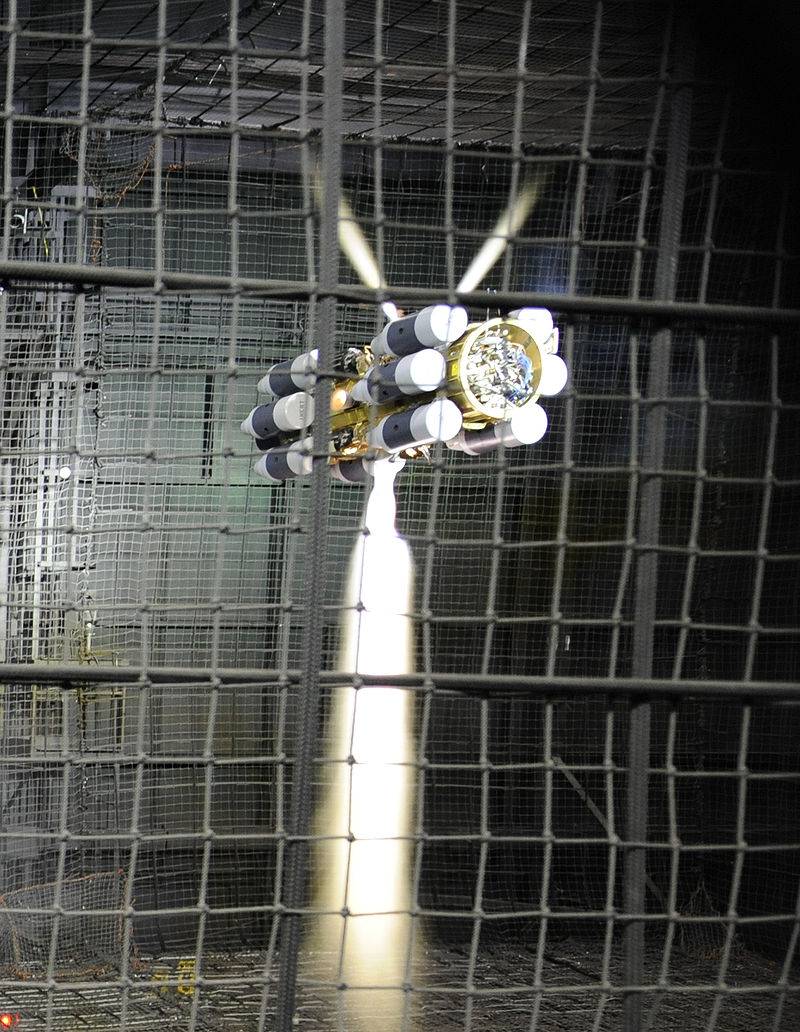
MKV-L Cluster Interceptor Ground Test
In the event of successful development, MKV interceptors are planned to be installed not only on GBI missiles of the GBMD strategic missile defense, but also on the SM-3 missiles IIA missile defense Aegis missile system, as well as the KEI ground-based mobile missile defense system being developed.
Why is such a complex and layered missile defense system being built? For North Korea to repeat the fate of Iraq and Yugoslavia? It is unlikely that such a missile defense system is too expensive. For this money, three times it is possible to arrange “perestroika” in North Korea in the image and likeness realized in the USSR or decompose it “into atoms” if you try to resist. But “After all, if the stars are lighting up - does it mean someone needs this?”, Is it possible that the US missile defense system deployed is needed for larger game hunting than North Korea?
Pravdorub Donald
U.S. President Donald Trump on January 17, 2019, published at the Pentagon an analytical report on national missile defense (Missile Defense Review). The document includes a new US strategy in space, which is called defense and provides for the expansion of the arsenal of missile defense. In particular, the strategy proposes to place in space a new generation of missile attack early warning satellites. According to the document, the most serious threat to the United States is North Korea, Iran, Russia and China. The report said that the United States will not limit itself in developing missile defense against countries that do not recognize international standards.
So, the masks are reset. Now it is no longer said that the American missile defense is aimed only against Iran or North Korea. Now Russia and China are clearly indicated as targets, and even the most stubborn liberals will not be able to deny it. No, you don’t formally find fault, they said that the missile defense is being created against “rogue countries”, so no one broke the word, just Russia and the PRC were also ranked as “rogues”.
For overly optimistic “cheers-patriots” who consider that the US missile defense against Russia is useless, one can cite the words of the First Deputy Chief of the Main Operations Directorate of the General Staff of the RF Armed Forces, Lieutenant General Viktor Poznikhir, said on April 24, 2019 at the VIII Moscow Conference on International Security.
Missile defense systems (ABM) near the borders of Russia are deployed by the United States in order to obtain the possibility of a nuclear strike against our country. The general explained that the United States is trying to build a missile defense system in which Russia will not be able to retaliate against the United States. The general noted that now American destroyers equipped with the Aegis system are on combat duty in the Japanese and South China Seas and regularly appear in the Baltic and Black Seas. In addition, Poznihir said that Washington plans to develop missile defense space systems that can intercept Russian ballistic missiles in the early stages of flight, as well as deliver preventive strikes on Russian territory. “The Americans intend to achieve strategic superiority through the implementation of the so-called pre-launch interception,” the representative of the General Staff summed up his analysis.
Hack and predictor Aviator
With regard to the confrontation between the United States and Russia, the missile defense system can not be categorically considered separately from the means of delivering a sudden disarming strike. How senseless the US missile defense is now and in the short term if Russia uses all available means to launch a nuclear strike, the same is a dangerous missile defense system if most of Russia's nuclear deterrence potential is destroyed by a sudden disarming strike.
Questions for further consideration. How is US missile defense evolving in the medium term? How dangerous will it be in the context of a sudden disarming strike? By what means can such a strike be delivered in the medium term and what will be the consequences?
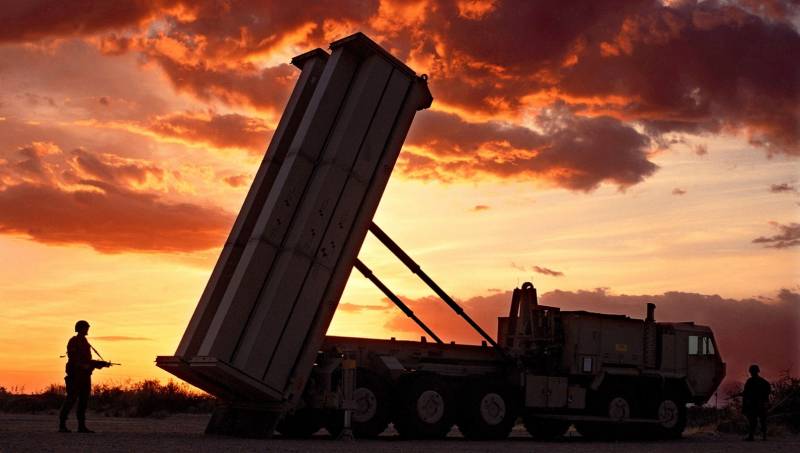
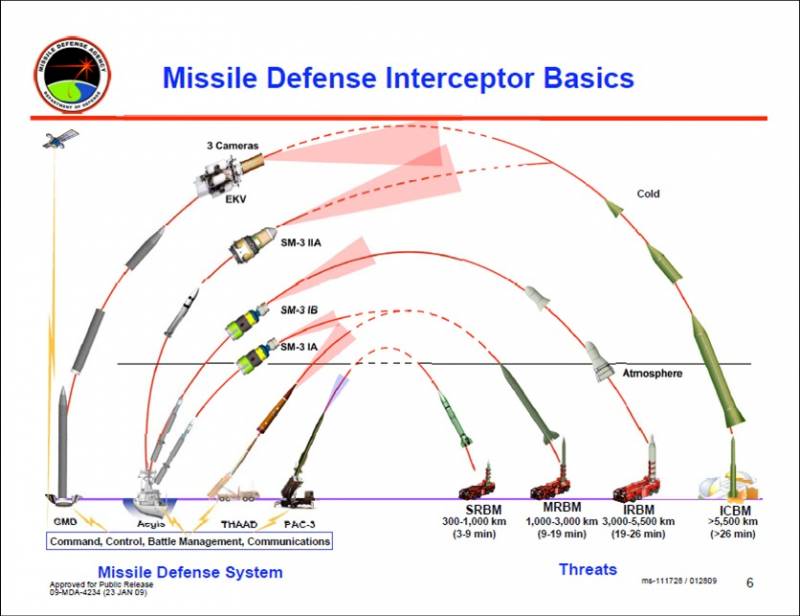
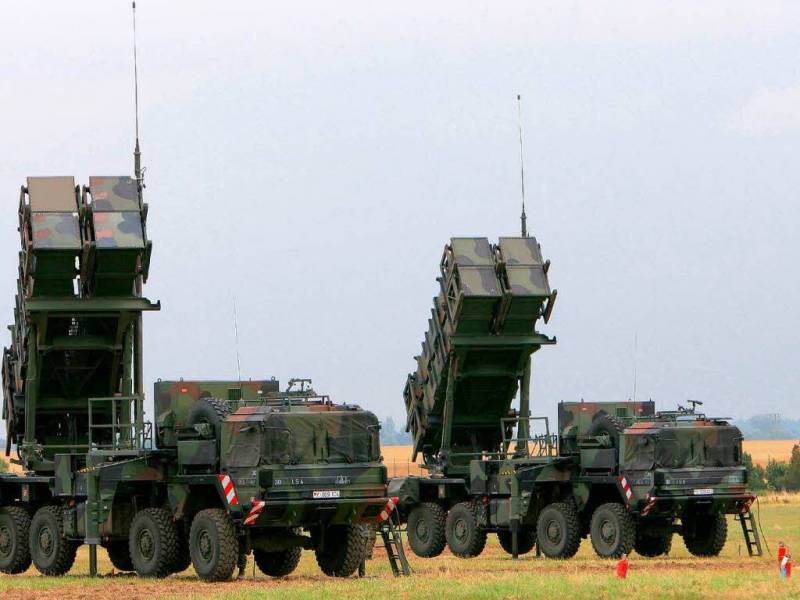
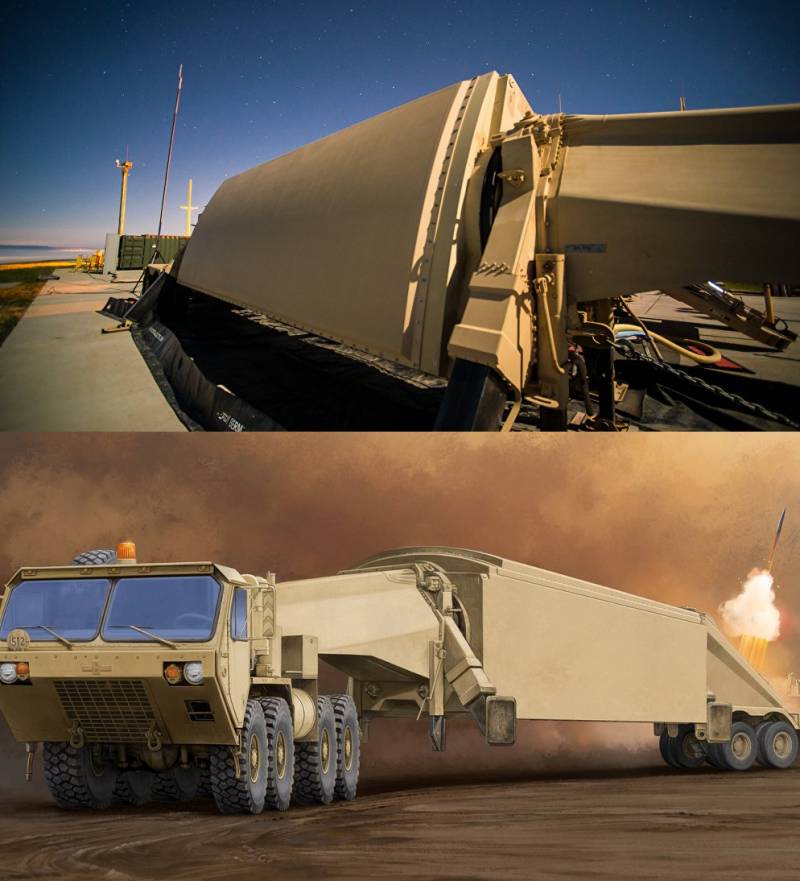
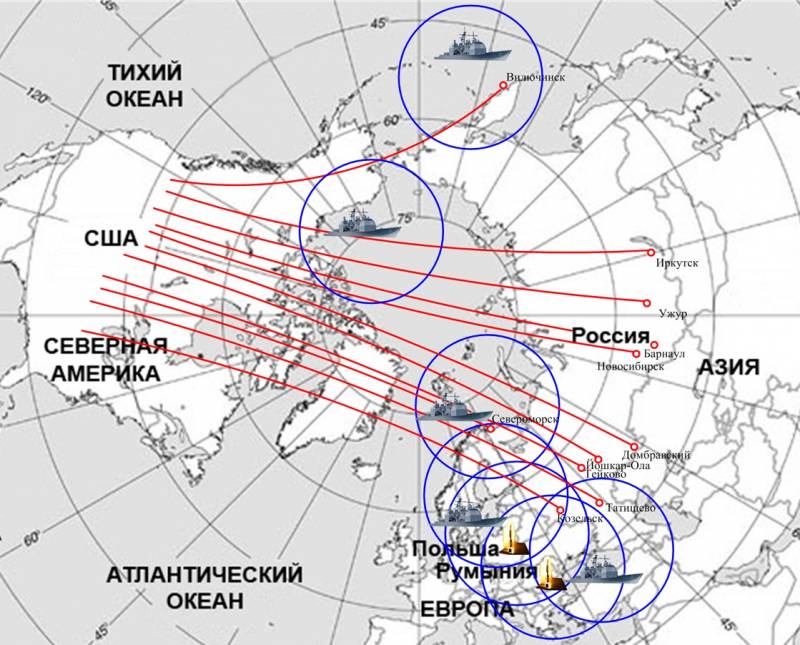
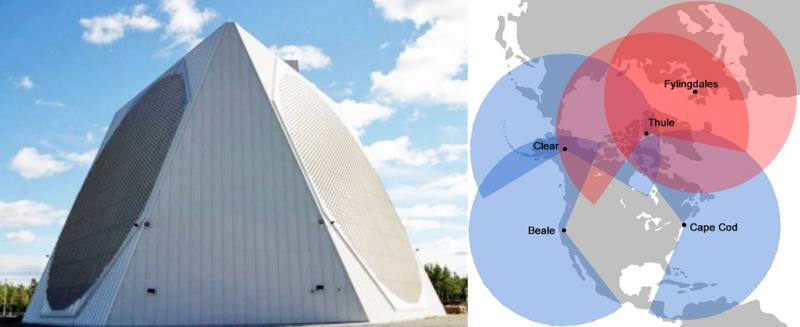
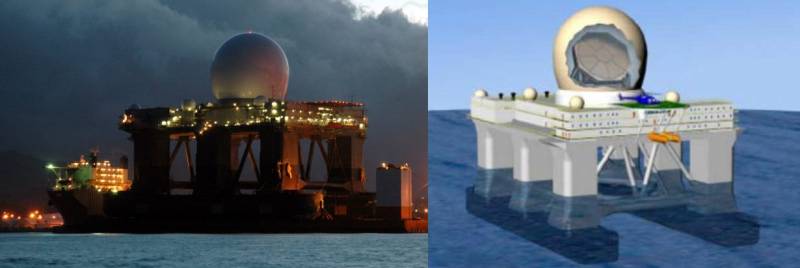
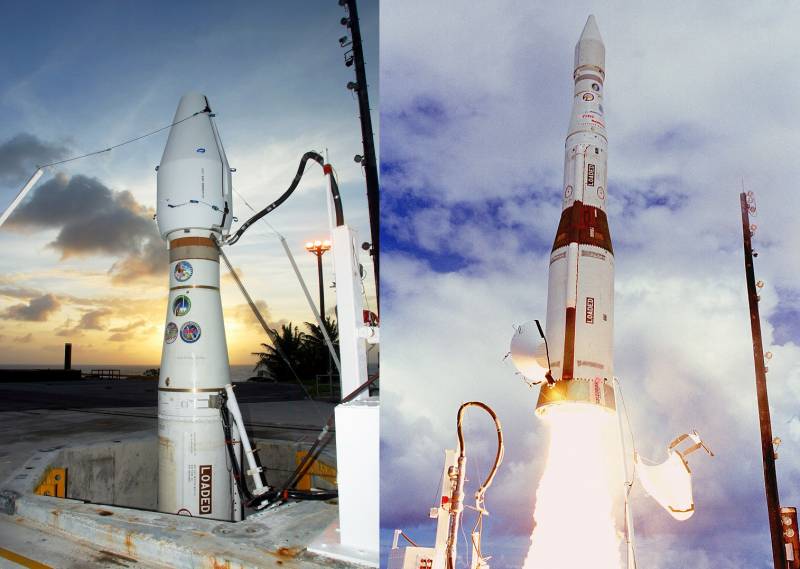
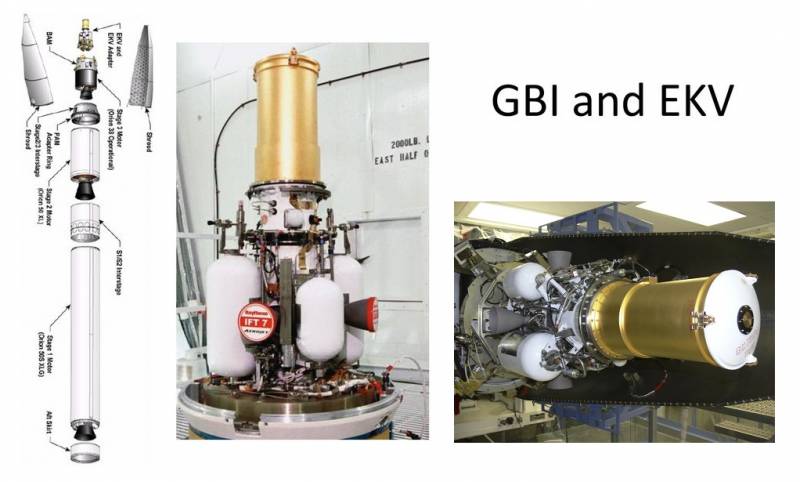
Information